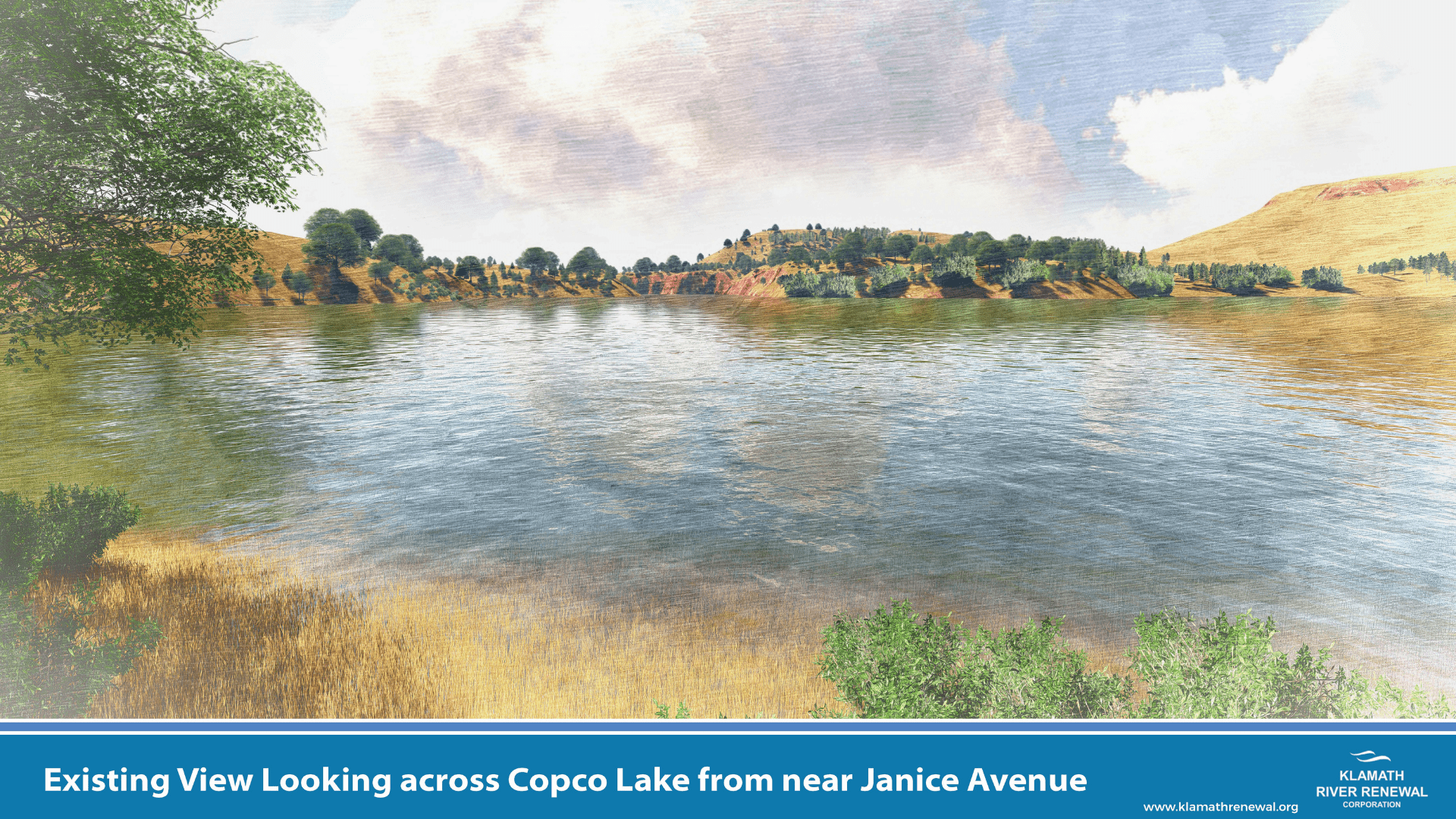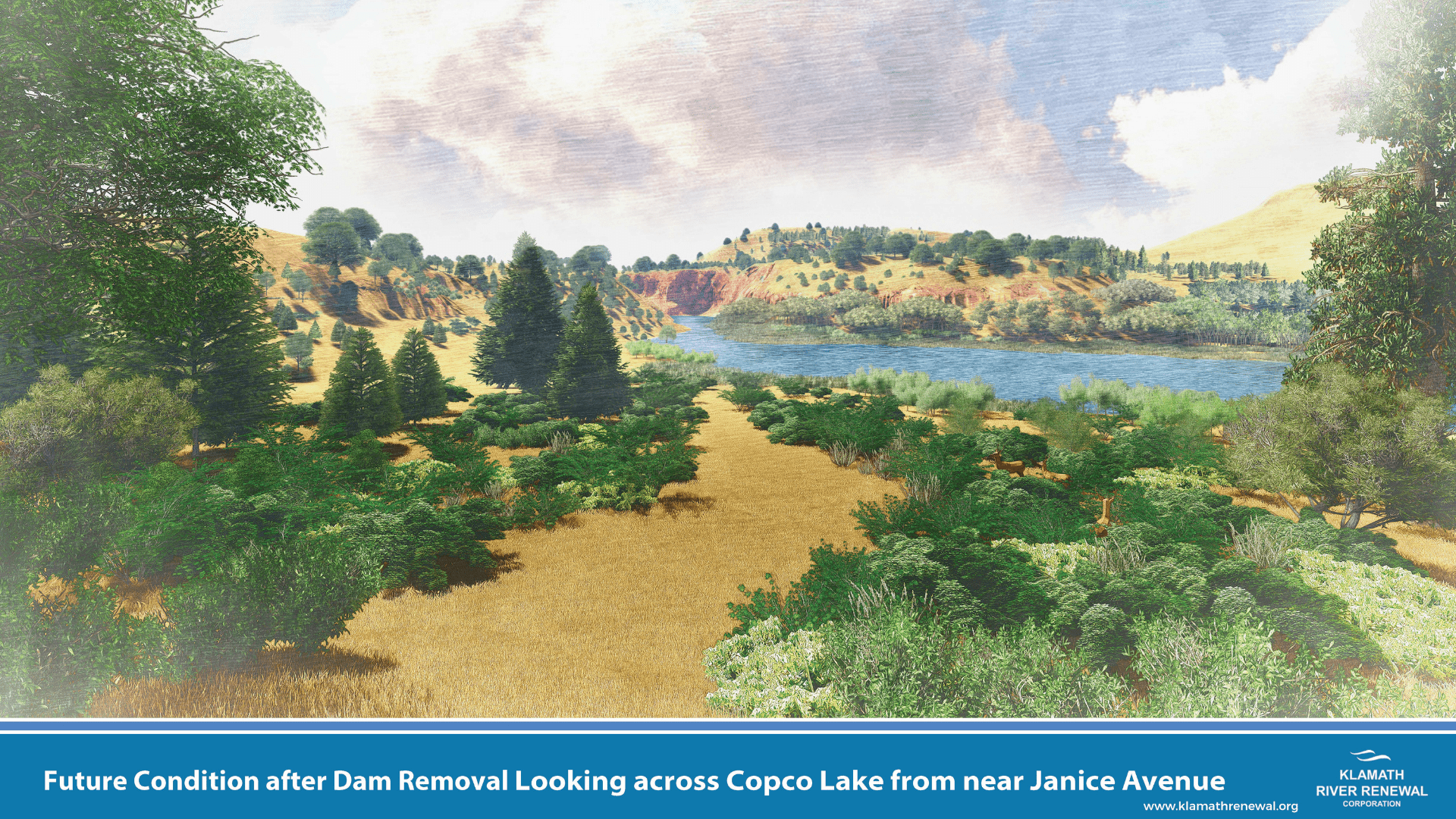Klamath Dam Update: Restoration Contract Signed
Restoration Contractor Chosen: Resource Environmental Solutions
Last month in an announcement on Business Wire, the Klamath River Renewal Corporation (KRRC) and Resource Environmental Solutions (RES) announced they have signed a contract for RES to provide restoration services in connection with the removal of four dams on the Klamath River. The agreement between RES and KRRC finalizes habitat restoration, maintenance, and liability transfer responsibilities for a fixed price, opening the door to a successful restoration of native vegetation and anadromous fish habitat along the historical, pre-dam path of the Klamath River.
The agreement confirms RES’ role as lead restoration contractor. The design and management plans described in the agreement fulfill the stringent permitting criteria of regulatory agencies involved in the project, including the Federal Energy Regulatory Commission (FERC), fisheries agencies in California and Oregon, and the U.S. Army Corps of Engineers.
“We are proud to have RES as our partner in accomplishing our shared vision of a renewed river system,” said Mark Bransom, CEO of the Klamath River Renewal Corporation. “Restoration is not some small task tagged on to a dam removal project. Extensively treating the thousands of acres in the project footprint following dam deconstruction – from planting native vegetation and stabilizing soils to ensuring tributary connectivity and controlling invasive species – is vital to achieving our overarching goal of recovering declining fish populations. We selected RES because of their successful track record permitting thousands of projects, many at the landscape-level, creating rich, high-functioning ecosystems with each one.”
Removing the Klamath Dams will open access to more than 400 miles of historical spawning and rearing habitat for salmon and steelhead. Achieving that goal includes reconnecting tributaries to the Klamath River, and the restoration contract covers the design, construction, and long-term management of 18,000 feet of high-priority tributaries. It also includes revegetation of 2,200 acres of new ground set to be exposed once reservoirs behind the dams are drawn down. The restoration plan minimizes temporary impacts on landowners, agriculture, and recreational users of the river while accelerating its return to the full ecological functioning of historical times.
Below is an artistic rendering depicting current conditions and the desired future condition multiple decades after dam removal. Slide the slider from left and right to toggle between the two images. Image credit: AECOM


Joint License Transfer Application Filed with FERC
In keeping with the terms of the Memorandum of Agreement signed in November 2020, PacifiCorp, California, Oregon, and KRRC filed a Joint License Transfer Application with the Federal Energy Regulatory Commission (FERC) on January 13, 2021. The Joint License Transfer Application asks FERC to remove PacifiCorp from the project license and add California, Oregon, and KRRC as co-licensees for purposes of license surrender, including carrying out dam removal.
Guardians of the River Film Highlights Tribal Activism Surrounding the Klamath Dam Removal
If you want to see the Klamath River through the eyes of Indigenous people who are powerfully connected to this vital waterway, we highly recommend the film “Guardians of the River.” The new film by American Rivers and Swiftwater Films can be viewed below.
Quiz: How Klamath basin are you?
The Klamath Basin is home to resilient individuals and communities. Take this Reconnect Klamath quiz to test your knowledge on a host of fun, new questions, and find out just how Klamath Basin you are!
More information and news updates
Follow the Reconnect Klamath website for more information: www.reconnectklamath.org
- Herald and News: Fire agencies find Klamath dam removal plan ‘adequate’ for fighting wildfire – 1/16/21
- Siskiyou Daily News: If dams are removed, will there be water for firefighting? KRRC says yes, with new plan – 1/18/21
- Eureka Times-Standard: 'In every memory': The Klamath River and the grassroots movement to save it - 1/24/21





